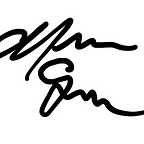JavaScript for the Complete Beginner | Part 2 — Variables
Last lesson we talked about why JavaScript is a good language to learn. Now we’re going to dive into JavaScript. To follow along, open this link in another window. I suggest that you minimize both pages so that each fits half the screen so that you don’t have to constantly jump back and forth.
Welcome to the Console
Every browser has a console that allows users to interact with the webpage. Though you can find a console in the developer tools of your browser, the link I provided will give us a uniform and clean slate on which to work. Try testing it out. type 2 + 2 and press enter. If you saw it return 4, great! It works. Let’s talk about variables.
Variables
If you’ve studied basic algebra, you should understand what a variable is. It’s a container for another value. x is probably the most popular variable name. When I say x + 2 = 3, I’m stating that we have an unknown number we’ve called x and that this unknown number plus two is equal to three. The main thing to understand here is that x is not referring to the letter x itself, it’s a placeholder we’ve placed there until we figure out what the unknown value is. JavaScript, like all programming languages, uses variables. An important part of being a good programmer is giving variables good names. E = mc² might work for a single equation, but a single JavaScript application might have thousands of variables. Don’t get lazy with your variables names.
Using camelCase 🐪
Different languages and people have different standards for naming variables. In JavaScript the standard is camelCase. That is, we leave the first letter lowercase, and if our variable is more than one word, we capitalize every following word instead of putting a space in between. camelCase is camelCased. amountOfIceCreamConsumed is camelCased. Programming languages don’t like spaces. Don’t use them in variable names.
Practice Time
Let’s go ahead and practice. Go to your console and type:
currentYear = 2020;then press enter.
(Note: from now on when I ask you to type something, pressing enter will be implied. Also, I’ll put the output you should be receiving underneath and after two /’s and an arrow so that it looks something like the following)
2 + 2;
// -> 4Now the variable currentYear is assigned the number 2020. Now type:
currentYear - 10;
// -> 20102010 should be returned. Now type currentYear. Notice how it’s still equal to 2020 — we didn’t change the variable’s value, we simply asked the computer what the variable currentYear, - 10, is. Variables in JavaScript can be reassigned, though:
currentYear = 1;
// -> 1Now currentYear is equal to 1.
Declaring and Assigning Variables
Time to memorize some terms. When we create a variable for the first time, we need to declare it using a declaration like var before it:
var currentYear;
// -> undefinedThis tells the computer to save some of its memory to store the declared variable.
🚩Why does it say undefined? 🚩
When we press enter, JavaScript evaluates our input and returns the result. When we declare a variable without assigning it a value, JavaScript gives it a placeholder value of undefined. It means that our computer has saved a variable in our memory that does not yet have a value. If we then assign a value to our variable, it’ll return the value:
var currentYear;
// -> undefinedcurrentYear = 2020;
// -> 2020
🚩Does it work if I forget to use var? 🚩
Yes. Should you? NO. Without going into too much detail now, JavaScript will declare them for you, and probably do a terrible of job of doing so. Make it a goal to always declare your variables.
Summary
You declare a variable before you use it:
var newVariable;
// -> undefinedyou assign a variable using the equals sign:
newVariable = 10;
// -> 10You may do them separately or on the same line:
var newVariable;
newVariable = 10;
// -> 10//-OR-var newVariable = 10;
// -> 10
Next time we’ll talk about data type.
